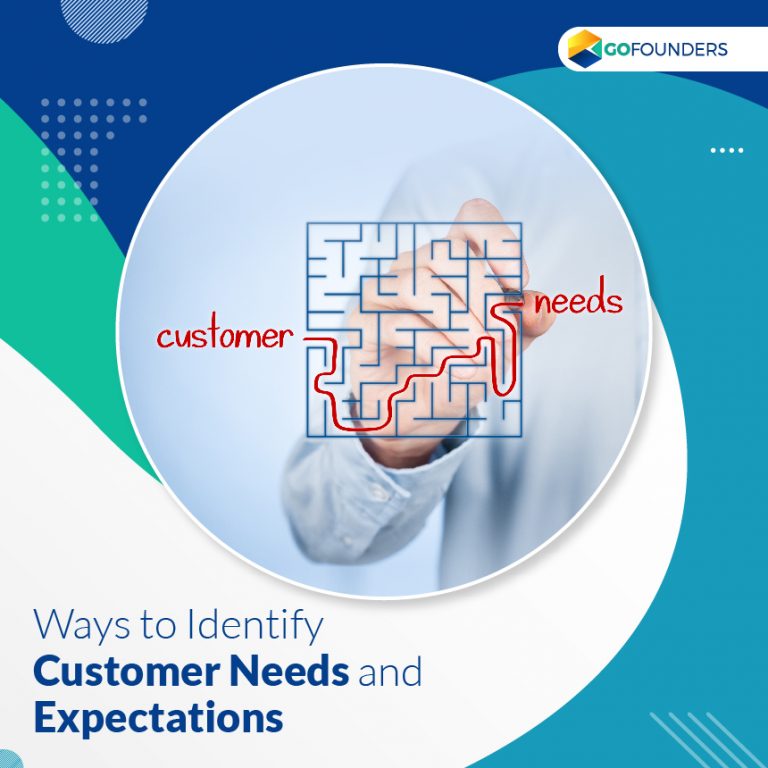
Many businesses focus on innovative solutions bypassing what their customer actually needs. It has shown that companies that build their strategies centered around their customers are 60 % more profitable than companies that aren’t focusing enough on their customer needs.
Your objective as a customer-centric company should be to offer products and services that are aligned with the customer’s needs. You can create value and build a strong customer base by identifying and fulfilling customer needs.
However, you must identify customer needs, wants, and expectations for better understanding. But what is the difference between customer needs, wants, and expectations?
A need is something that tends to solve a given problem. A want is something that a customer would like to have for any or no reason. And Expectations are the anticipated occurrence of a purchase.
Following are the ways by which you can identify customer needs and expectations:
1. Get customer insights
Examining customer’s needs and expectations is an integral part of service conversations. And your support department is a source of all the required information your customers need.
Expressing one’s needs is not always easy. Many customers face this challenge while expressing what exactly they are looking for and what is it that they are expecting.
This may happen because of two main reasons:
- They are not practiced or skilled at expressing themselves.
- They got overwhelmed with the complex terminologies you have used in the description of your products or services.
In the first case, you need to listen carefully so that it will be easier for you to ask the right questions and thereby receive the right kind of information from customers.
In the second case, you need to remove barriers to complex terminologies by using more straightforward and easy language.
Further, you can consider asking these questions to better understand your customer’s needs:
- What do you want from a product?
- What is the issue you would like to resolve using this product?
- How much can you pay for the product?
2. Classify customer feedback
Gathering customer feedback is an essential norm. However, an effective way to approach customer’s feedback is to reach out to them through various channels and classifying their response. You can exploit the following options to collect customer feedback:
- Emails
- Surveys
- Polls on social media
- Comment boxes
This feedback can be either in a written form or spoken words. They may also incur some biases. You must provide inputs that are collective and classified so that it will be easier to deliver reliable conclusions.
Also, organize collected feedback on a common platform so that your teammates can get a comprehensive idea about customer’s needs. Thereby, they can also identify customer’s expectations.
3. Utilize Customer metrics for better understanding
In your pursuit of understanding your customer’s needs and expectations, you must assess customer metrics- measures that have helped you attract customers back to your products or services.
These metrics inform you about customer’s tendency and perception. You can utilize quantitative measures over qualitative ones as numbers often give a straightforward and clear idea.
There are various methods to measure customer satisfaction. They are- customer satisfaction score, customer effort score, net promoter score etc.
Also, there are several customer retention metrics and metrics to measure customer loyalty. By exploiting these methods and tools you can identify customer needs and expectations effectively.
4. Get insights from the community
Social media is rather a powerful tool that helps you track your community and get insights. Following are some of the tools that help you monitor and assess your brand’s position over the Internet.
- Google Alerts: This service by Google alerts you when your brand appears in a significant position.
- Mention: It is a handy social media tool that notifies whenever your brand gets any mention on the web.
- Socialmention: This tool analyzes mentions of your brand over various social media. It includes all sorts of mentions be it positive or negative and analyze the range of influence your brand has.
By utilizing the above tools, you will get a better idea about your brand’s image among your community on social media. By tracking this way, you can take proper measures to enhance your brand image.
Concluding thoughts
Implementing a customer-centric strategy is a step forward in building a loyal customer base. The more you identify and understand customer needs, it’s most likely that your customers will seek satisfaction with the kind of products and services you are offering. Thus, you need to exploit various measures and tools to improve this understanding. This article has explained how you can identify and understand customer needs.



Patricio Rivers
3 years ago